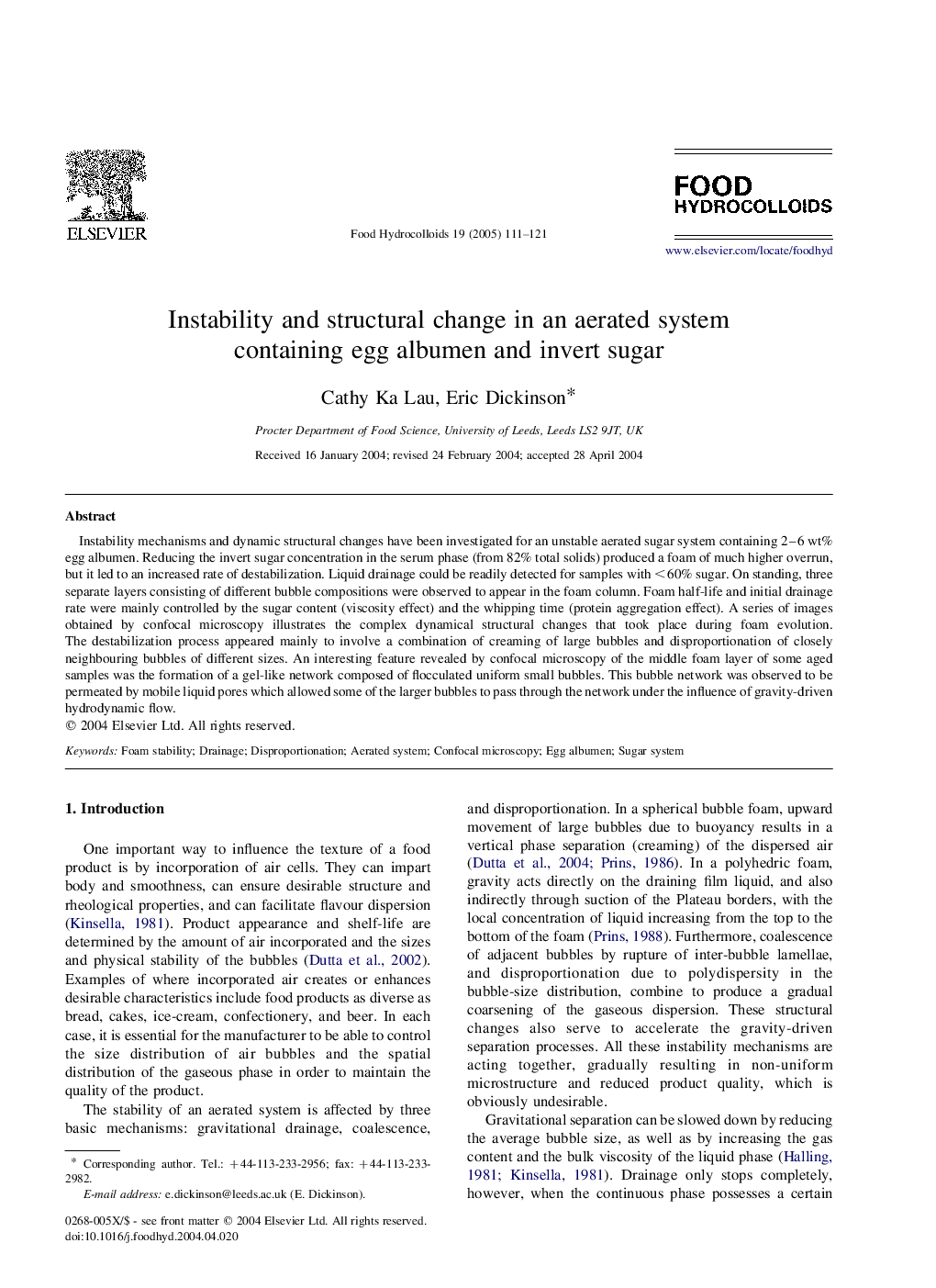| Article ID | Journal | Published Year | Pages | File Type |
|---|---|---|---|---|
| 10375874 | Food Hydrocolloids | 2005 | 11 Pages |
Abstract
Instability mechanisms and dynamic structural changes have been investigated for an unstable aerated sugar system containing 2-6Â wt% egg albumen. Reducing the invert sugar concentration in the serum phase (from 82% total solids) produced a foam of much higher overrun, but it led to an increased rate of destabilization. Liquid drainage could be readily detected for samples with <60% sugar. On standing, three separate layers consisting of different bubble compositions were observed to appear in the foam column. Foam half-life and initial drainage rate were mainly controlled by the sugar content (viscosity effect) and the whipping time (protein aggregation effect). A series of images obtained by confocal microscopy illustrates the complex dynamical structural changes that took place during foam evolution. The destabilization process appeared mainly to involve a combination of creaming of large bubbles and disproportionation of closely neighbouring bubbles of different sizes. An interesting feature revealed by confocal microscopy of the middle foam layer of some aged samples was the formation of a gel-like network composed of flocculated uniform small bubbles. This bubble network was observed to be permeated by mobile liquid pores which allowed some of the larger bubbles to pass through the network under the influence of gravity-driven hydrodynamic flow.
Related Topics
Physical Sciences and Engineering
Chemical Engineering
Colloid and Surface Chemistry
Authors
Cathy Ka Lau, Eric Dickinson,
